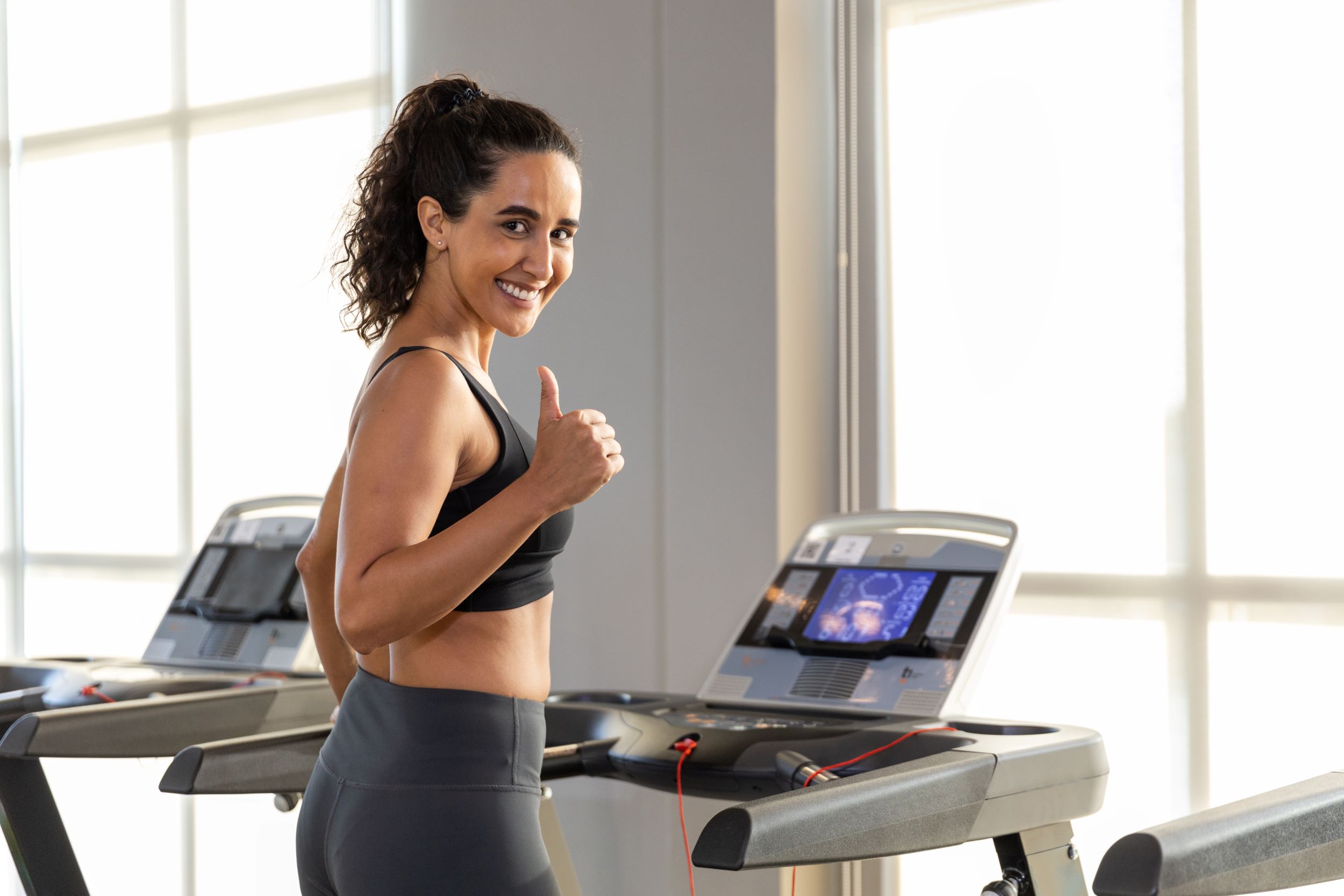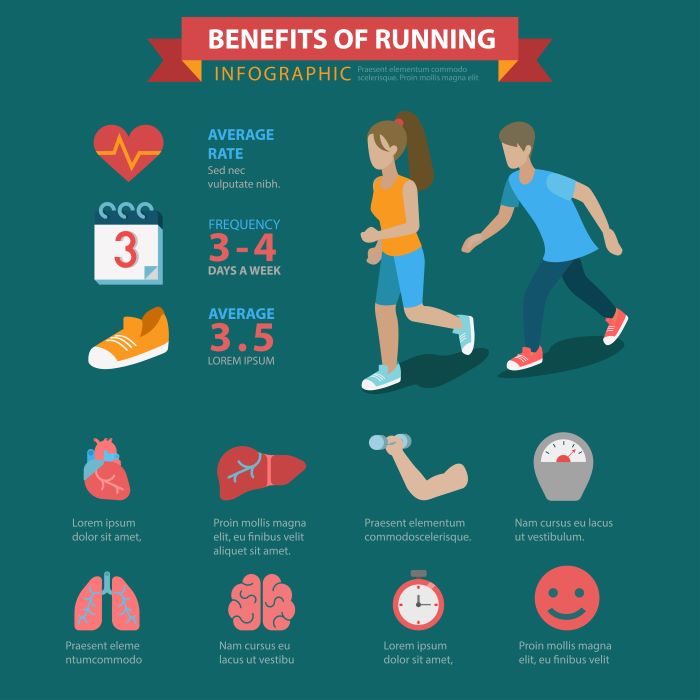When it comes to running, *good running form* is not just a matter of aesthetics; it’s a vital component of performance and injury prevention. Proper form enhances efficiency, enabling you to cover distances with less energy and greater speed. This is particularly crucial when you’re running on a treadmill, where the repetitive motion can amplify the risk of strain if your form is off.
Good running form involves several key elements:
- Posture: Maintain an upright position with a slight forward lean. Your head should be aligned with your spine, and shoulders relaxed.
- Foot Strike: Aim for a midfoot strike rather than landing on your heels to minimize impact.
- Arm Movement: Keep your arms bent at about a 90-degree angle and swing them naturally at your sides to help with balance.
- Breathing: Develop a rhythmic breathing pattern that supports your pace, ideally in a 2:2 count (two steps for each inhale and two for each exhale).
Understanding these elements not only fosters a more enjoyable running experience but also cultivates a strong foundation for your fitness journey. As you begin to implement these techniques, you’ll likely notice improvements in your endurance and overall enjoyment of the sport.
Visit our website to learn more and get started today! Click here.
Key Elements of Good Running Form on Treadmill

Mastering *good running form* on a treadmill involves focusing on several key elements that can significantly enhance your performance and safety. Unlike running outdoors, where terrain can vary, the treadmill provides a controlled environment, allowing you to concentrate on your technique.
Here are the essential elements to consider:
- Foot Placement: As you run, ensure that your feet land directly beneath your hips. This helps maintain balance and reduces the risk of injury.
- Stride Length: Avoid overstriding, which can lead to excessive impact on your joints. Instead, maintain a shorter, quicker stride that promotes a natural flow.
- Alignment: Keep your body aligned. Your head should be up, looking straight ahead, while your hips and shoulders remain square. This alignment is crucial for preventing strain.
- Cadence: Aim for an optimal cadence of about 170-180 steps per minute. A higher cadence can contribute to better running efficiency and reduced injury risk.
- Breathing Technique: Focus on deep, rhythmic breaths. Practice inhaling through your nose and exhaling through your mouth to maintain adequate oxygen flow.
By integrating these key elements into your treadmill routine, you can maximize your workout efforts while minimizing the chances of injury. This focused approach will not only improve your running form but also enhance your overall fitness experience.
Common Mistakes to Avoid While Running

Even seasoned runners can fall into the trap of making mistakes that can hinder performance and increase the risk of injury. Being aware of these common pitfalls is essential for anyone looking to master *good running form on a treadmill*. Here are some prevalent mistakes to avoid:
- Overstriding: Many runners instinctively extend their legs too far in front of them. This can lead to increased impact on the knees and joints, resulting in discomfort. Focus on landing your feet under your body to maintain proper alignment.
- Incorrect Posture: Slouching or leaning too far forward can strain your back and neck. Keep your torso upright and your shoulders relaxed to promote better posture throughout your run.
- Ignoring Warm-Up: Skipping a warm-up can leave your muscles unprepared for the workout ahead. Always incorporate dynamic stretches or a light jog to get your body ready for the treadmill.
- Not Paying Attention to Footwear: Using worn-out or inappropriate shoes can lead to injuries. Ensure your running shoes provide adequate support and cushioning specific to your foot type.
- Running Too Fast: Newcomers often push their speed limits too quickly, which can result in fatigue and improper form. Start at a comfortable pace and gradually increase your speed as you build stamina.
By avoiding these common mistakes, you can enhance your running experience on the treadmill, ensuring that your workout remains not only effective but also enjoyable.
Tips for Maintaining Proper Running Posture

Maintaining proper running posture is crucial for maximizing efficiency and minimizing the risk of injury. Whether you’re a beginner or a seasoned runner, following these tips can help you achieve and maintain *good running form on a treadmill*:
- Head Position: Keep your head aligned with your spine. Avoid looking down at the treadmill; instead, gaze forward to maintain balance and proper alignment.
- Shoulder Relaxation: Tension in the shoulders can lead to discomfort and hinder your running form. Keep your shoulders relaxed and down, away from your ears, to promote better airflow and reduce strain.
- Arm Movement: Your arms should move naturally, with elbows bent at about 90 degrees. Swing your arms forward and backward, not across your body, to help propel you forward and maintain rhythm.
- Core Engagement: A strong core stabilizes your body and helps maintain proper posture. Focus on engaging your abdominal muscles while running to support your spine and improve efficiency.
- Foot Strike: Aim for a midfoot strike rather than landing on your heels or toes. This helps distribute impact evenly and promotes a smoother running motion.
Incorporating these tips into your treadmill routine will not only improve your running performance but also enhance your overall enjoyment of the workout. Remember, *good running form on a treadmill* is a key component in your journey towards fitness freedom.
Benefits of Good Running Form for Treadmill Workouts
Achieving *good running form on a treadmill* offers numerous benefits that can significantly enhance your workout experience and overall fitness journey. Here are some key advantages:
- Improved Efficiency: Proper running form allows your body to utilize energy more effectively, enabling you to run longer distances or at higher intensities without feeling fatigued as quickly.
- Injury Prevention: By maintaining good posture and technique, you reduce the risk of common running injuries like shin splints, runner’s knee, and plantar fasciitis. This is especially important on a treadmill, where the repetitive motion can exacerbate poor form.
- Enhanced Performance: Whether you’re training for a race or simply trying to improve your fitness, good running form can lead to faster times and better overall performance. Your body works more harmoniously, allowing for quicker strides and more power.
- Greater Comfort: Running with proper form reduces discomfort during workouts. You’ll find that you can maintain your treadmill routine longer and with less physical strain, making your sessions more enjoyable.
- Better Posture Overall: Developing good running form on the treadmill translates to improved posture in your daily activities. Strengthening your core and maintaining alignment can contribute to better overall body mechanics.
Incorporating these benefits into your treadmill workouts can greatly enhance your fitness journey, making each run not only more effective but also more enjoyable.
Incorporating Good Running Form into Your Routine

Integrating *good running form* into your treadmill routine is essential for maximizing your workouts and achieving your fitness goals. Here are some practical strategies to help you incorporate proper technique:
- Warm-Up Exercises: Start with dynamic stretches and mobility drills that activate key muscle groups. This prepares your body for the run and helps reinforce good posture.
- Focus on Posture: Keep your head up, shoulders relaxed, and arms at a 90-degree angle. Your feet should land beneath your hips to maintain balance and reduce impact.
- Use Visual Cues: Watching videos or using mirrors can provide feedback on your form. Observing your technique helps you make necessary adjustments to ensure you maintain good posture throughout your run.
- Short Intervals: Incorporate short intervals into your treadmill sessions. Focus on maintaining good form during these bursts of intensity. This practice will build muscle memory, helping you sustain proper technique over longer distances.
- Cool Down and Stretch: After your workout, take time to cool down and stretch. This not only aids recovery but also reinforces the muscle groups used during proper running form.
By consistently applying these tips, you can develop good running habits that will enhance your treadmill workouts. Visit our website to learn more and get started today! Click here.


